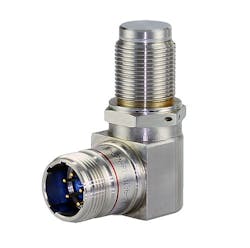Self-diagnosis: how self-monitoring sensors can help boost safety and save time
By Erik Tobler, regional product marketing manager, Honeywell
Today’s competitive environment has put increased pressure on design engineers to use highly reliable and accurate components but at a lower cost. To address this, component manufacturers have sparked innovation to deliver new component technologies such as sensors that meet these market dynamics. Today’s sensor technologies can provide incredible value and information immediately to a user, such as a pilot or aircraft operator, which can impact safety or even a business’s bottom line.
Proximity sensors, for instance, have advanced in recent years to become more cost effective and withstand harsh conditions, providing high measurement accuracy and health-monitoring systems to help operators immediately identify possible malfunctions with the sensor itself.
Taking it even further, contactless proximity sensors have advanced to offer greater performance reliability than their electromechanical predecessors. For harsh environments such as aircraft and heavy machinery, new contactless proximity sensor technologies such as eddy current killed oscillators (ECKO) have proven to be ideal, as they are cost effective and robust, and can support a wide range of electrical input capability ranges. These new sensors can also be built with technologies that can report sensor health status back to the control module. For example, it can alert a pilot that a sensor is malfunctioning, thus there is no need to divert the flight, and provides aircraft mechanics with precise diagnostic information to fix it faster.
What is ECKO technology?
ECKO technology is a delineation from inductive technology. ECKO proximity switches are non-contact, non-interactive sensors that are sensitive to all metals. These sensors consist of an oscillator, demodulator, level, and switching amplifier.
When a conductive object (or target) approaches the sensor’s oscillating electromagnetic field, Eddy currents are induced in the target and increase as the target gets closer to the sensor. In an ECKO-type proximity switch, the loss of energy to the target increases enough to kill the natural magnetic field oscillation of the sensor. This loss of oscillation is detected internally by the sensor and used to trigger the sensor’s output.
The advancements to these sensors have helped increase reliability because components have no moving parts that can wear out or require re-adjustment after use. Making for an easier design, they also do not require physical contact with the target, and are capable of monitoring the health of internal electronics.
Self-diagnosing a sensor’s health
Proximity sensors equipped with health monitoring technologies are new innovations and can provide operators with valuable information on the sensor’s condition that can have significant safety and business impact. For instance, a pilot who sees a fault light in his aircraft landing gear system can see during mid-flight if the landing gear is not completely stowed or if the proximity sensor itself has failed. This vital information can help the pilot decide whether to continue with the flight as normal, divert to the nearest airport, or delay the flight. Picking the right course of action can potentially save airline companies lost revenue and better ensure safety of the aircraft.
Additionally, sensor failure detection can be valuable in commercial aircraft maintenance and fault diagnosis because it allows for easier troubleshooting. If the proximity sensor has failed, this information can aid repair mechanics on the ground without a long and expensive troubleshooting session.
ECKO sensors today can be equipped with health monitoring capabilities to notify engineers or operators of potential issues with a sensor before or after the component fails. Most health monitoring technologies for sensors add a variable gain amplifier that keeps oscillation at a constant level and increases the current to maintain the oscillation amplitude. Like ECKO, health monitoring not only measures the eddy current losses caused by the target, but it also measures the current in the oscillation circuit instead of the oscillation amplitude. Health monitoring also adds additional circuitry to monitor critical circuitry for faults and normal operation.
A proximity sensor with health monitoring can provide continuous real-time diagnostics and customizable three-state outputs that allow operators to quickly discern whether a system problem is between system target faults or a sensor malfunction.
Sensors may be small components within an aircraft but these technologies can play a critical role. With cost being a factor for design engineers and operators, sensors today have evolved to provide accuracy and reliability in cost-effective packages. Not only are these sensors becoming more cost efficient to incorporate, but many can also provide valuable fault monitoring capabilities that can aid operators to make critical decisions that can improve safety and save operators time and money.
Search the Aerospace & Defense Buyer's Guide
The go-to resource for Intelligent Aerospace technology news & information:
Covering key topics
Across all market segments
Subscribe to the free Intelligent Inbox e-newsletter
Subscribe to receive all the latest aerospace technology news & information, delivered directly to your e-mail inbox twice a week (Tuesdays and Thursdays). Sign upfor your free subscription to the Intelligent Inbox e-newsletter at http://www.intelligent-aerospace.com/subscribe.html.
Connect on social media
Keep pace with aerospace innovation and opportunities via your favorite social media channels. Connect with Intelligent Aerospace on Twitter (@IntelligentAero), LinkedIn,Google+, and Instagram.



